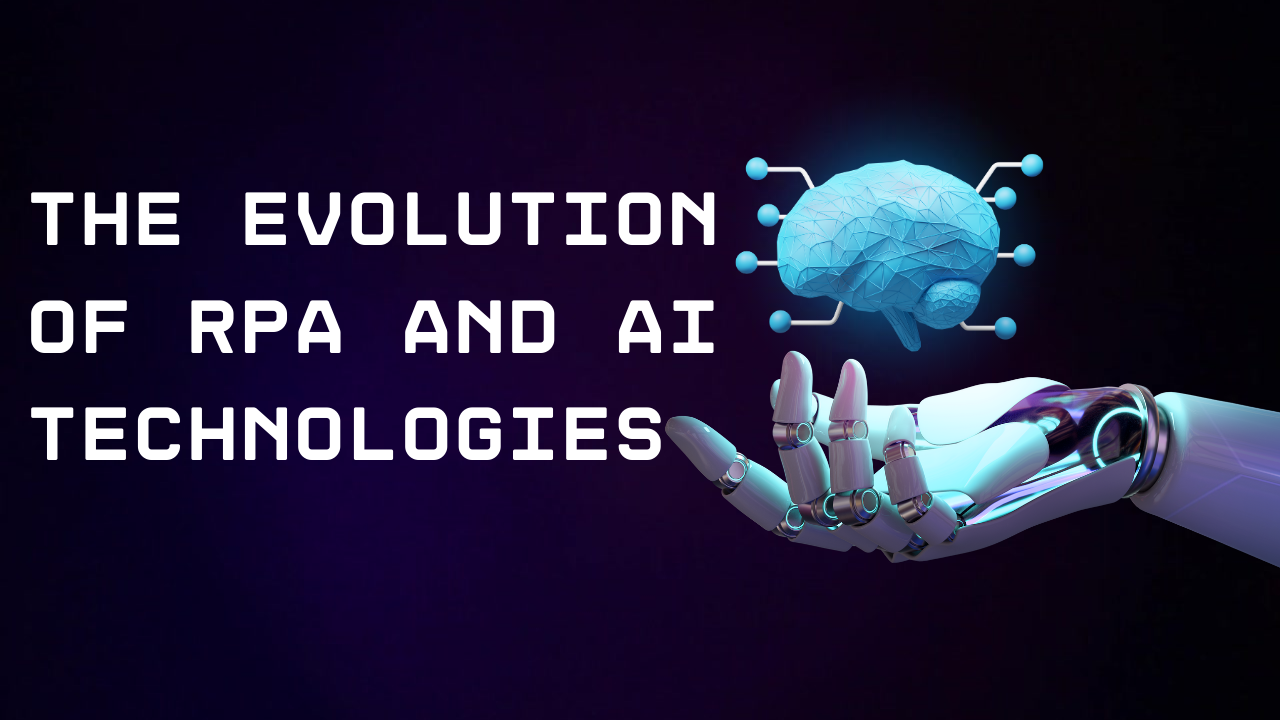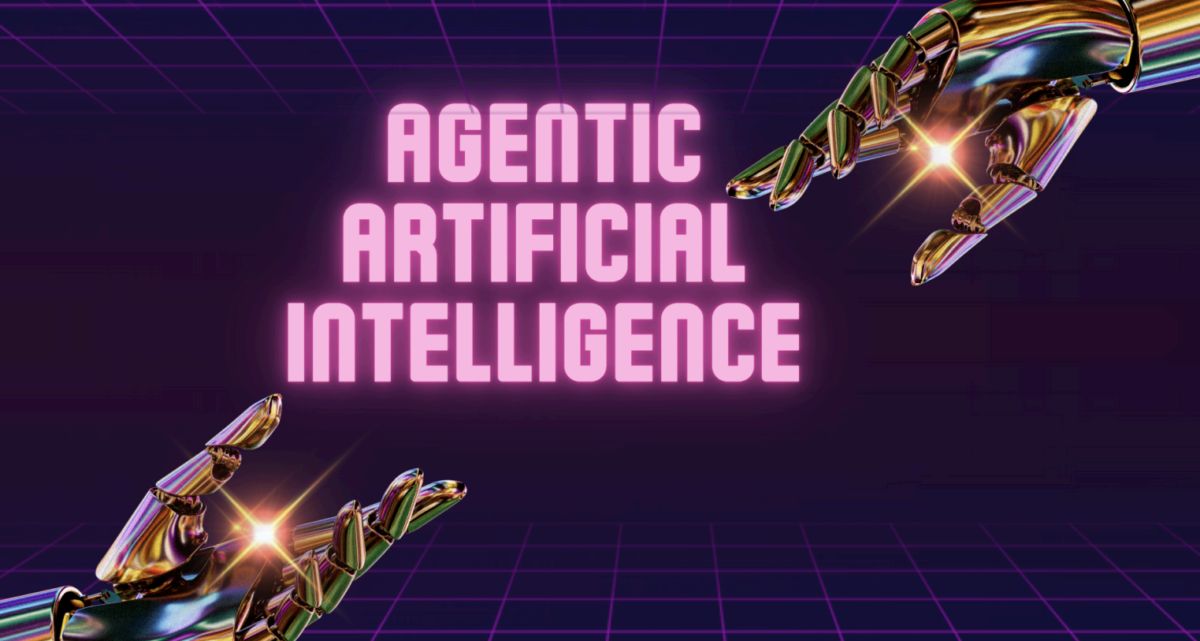The Intersection of RPA and AI

(Robotic Process Automation) RPA Services and Artificial Intelligence (AI) have become popular buzzwords in recent years thanks to the immense benefits they bring to businesses. Combining the two provides a unique opportunity to streamline business processes, increase efficiency, and reduce errors. This article aims to provide an in-depth understanding of RPA and AI and how the two complement each other. We’ll explore the origins of RPA and AI, real-world applications of their integration, and the benefits of combining them.
Understanding RPA and AI: Key Concepts and Definitions
Advancements in technology have revolutionized the way businesses operate. Automation has become a buzzword in the corporate world, and two of the most popular technologies that have emerged in recent years are Robotic Process Automation (RPA) and Artificial Intelligence (AI). Let’s take a closer look at what they are and how they work.
The Intersection of RPA and AI has revolutionized various industries, including mobile application development. Robotic Process Automation (RPA) and Artificial Intelligence (AI) are two powerful technologies that, when combined, offer significant advancements in efficiency, productivity, and user experience.
What is Robotic Process Automation (RPA)?
Robotic Process Automation (RPA) is a technology that uses software robots (also known as bots) to automate mundane, repetitive, and rule-based business processes. This technology has gained immense popularity in recent years due to its ability to reduce costs, improve efficiency, and enhance accuracy.
Unlike traditional automation, RPA doesn’t require coding and can be programmed to mimic human actions such as filling out forms, extracting data from documents, and performing calculations. The bot works as a virtual employee, interacting with existing systems and applications to complete tasks. This frees up human employees from repetitive tasks and allows them to focus on more complex and creative work.
RPA has a wide range of applications across various industries, including finance, healthcare, manufacturing, and retail. It can be used to automate tasks such as data entry, invoice processing, customer service, and supply chain management.
The intersection of Robotic Process Automation (RPA) and Artificial Intelligence (AI) has revolutionized the landscape of application development. RPA, the technology that automates repetitive tasks and processes, and AI, the branch of computer science that enables machines to perform intelligent tasks, have merged to create powerful solutions for app developers.
What is Artificial Intelligence (AI)?
Artificial Intelligence (AI) is a branch of computer science that enables machines to learn from experience, perform human-like tasks, and make decisions based on data. It encompasses various technologies such as Machine Learning (ML), Natural Language Processing (NLP), and Deep Learning.
AI applications can be either rule-based or self-learning, and they can assist in decision-making, predictive analytics, and process automation. One of the key benefits of AI is its ability to analyze large amounts of data and identify patterns that humans may not be able to detect. This can lead to more accurate predictions and better decision-making.
AI has a wide range of applications across various industries, including finance, healthcare, marketing, and transportation. It can be used to develop chatbots for customer service, analyze medical images for diagnosis, predict demand for products, and optimize logistics routes.
In conclusion, RPA and AI are two powerful technologies that are transforming the way businesses operate. While RPA is focused on automating repetitive tasks, AI is focused on making intelligent decisions based on data. Together, they offer a powerful combination that can help businesses improve efficiency, reduce costs, and enhance customer experience.
The Evolution of RPA and AI Technologies

As businesses look for ways to improve efficiency and reduce costs, the use of automation technologies has become increasingly popular. Two of the most widely used technologies in this space are Robotic Process Automation (RPA) and Artificial Intelligence (AI). While both are used for automation, they have distinct differences in their origins and capabilities.
The Origins of RPA
RPA technology has been around for over a decade, but it is only in recent years that it has gained wider acceptance and use. The first generation of RPA software was a desktop automation tool that was used to automate repetitive tasks such as data entry. These tools were limited in scope and lacked the ability to interact with other applications, making them useful only for simple, straightforward processes.
However, as businesses began to see the benefits of automation, the demand for more sophisticated RPA software grew. This led to the development of newer generations of software that are more capable and versatile. Today, RPA is used to automate a wide variety of business processes, from HR and finance to customer service and IT.
One of the key benefits of RPA is that it can be used to automate processes without the need for complex coding or programming. This makes it an accessible technology for businesses of all sizes, as it allows them to automate processes quickly and easily.
The Development of AI
The development of AI, on the other hand, has been a more recent phenomenon. The essence of AI was first articulated in the 1950s by mathematicians and scientists who had a vision of creating machines capable of intelligent reasoning and decision-making. However, it wasn’t until the last decade that AI became a reality, thanks to advances in data processing, cloud computing, and machine learning algorithms.
AI is now used in a wide variety of applications, from chatbots and virtual assistants to predictive analytics and fraud detection. One of the key benefits of AI is its ability to learn and adapt over time, making it a powerful tool for businesses that need to automate complex and variable processes.
The combination of RPA and AI has opened up new possibilities for businesses that are looking to automate complex and variable processes such as customer service, IT support, and supply chain management. By combining the strengths of both technologies, businesses can create more efficient and effective processes that can adapt to changing circumstances and requirements.
How RPA and AI Complement Each Other
Robotic Process Automation (RPA) and Artificial Intelligence (AI) are two of the most significant technological advancements of our time. While they are different in their approach and functionality, they complement each other perfectly. In this article, we will explore how RPA and AI work together to enhance business processes and workflows.
Enhancing RPA with AI Capabilities
RPA software is excellent at automating repetitive tasks that follow fixed rules. However, it struggles when it comes to processing unstructured data such as text, images, or video. This is where AI comes in and enhances RPA capabilities by providing natural language processing, computer vision, and machine learning algorithms that can understand and interpret unstructured data.
For example, suppose a company needs to process a large number of invoices every day. In that case, RPA can automate the process of extracting data from the invoices, such as the invoice number, date, and amount. However, if the invoices are in different formats or languages, RPA may not be able to extract the data accurately. By integrating AI capabilities, RPA can learn to recognize different formats and languages and extract the data accurately.
By combining RPA and AI, businesses can create more sophisticated processes and workflows that can handle complex data and tasks. For instance, an e-commerce company can use RPA to automate the process of processing orders, while AI can be used to analyze customer data and personalize the shopping experience for each customer.
AI-Driven Decision-Making in RPA
AI also plays a crucial role in driving decision-making in RPA. By analyzing previous interactions and predicting outcomes, AI algorithms can guide RPA processes to the most optimal and efficient path. This can help reduce errors, increase efficiency, and improve the overall quality of the process.
For example, suppose a company uses RPA to process loan applications. In that case, AI can be used to analyze the credit history of the applicants and predict the likelihood of default. Based on this analysis, the RPA process can be guided to approve or reject the application, reducing the risk of default and improving the overall quality of the loan portfolio.
AI also enables RPA bots to learn from new data and experiences, making them more intelligent and adaptable over time. This means that as the business grows and evolves, the RPA processes can adapt and improve to meet new challenges and requirements.
Real-World Applications of RPA and AI Integration
As businesses continue to grow and evolve, there is a constant need to improve processes, enhance customer service, and gain valuable insights into operations. One of the most significant advancements in recent years has been the integration of Robotic Process Automation (RPA) and Artificial Intelligence (AI). This integration has enabled businesses to streamline their operations, improve customer service and support, and enhance data analysis and insights.
Streamlining Business Processes
One of the most significant benefits of integrating RPA and AI is the ability to streamline business processes. With RPA bots automating repetitive tasks and AI data analysis tools providing valuable insights into business operations, businesses can identify areas where they can optimize their processes and make them more efficient.
For example, an e-commerce business can use RPA to automate the process of adding new products to their website. AI can then be used to analyze customer behavior and identify which products are most popular. This data can then be used to optimize the website’s layout, making it easier for customers to find what they are looking for and ultimately increasing sales.
Improving Customer Service and Support
Customer service and support are critical areas where businesses can benefit from RPA and AI integration. By automating front-end customer service queries using chatbots and AI-powered tools, businesses can improve customer satisfaction and reduce the response time.
For example, a telecommunications company can use RPA to automate the process of activating new SIM cards. AI can then be used to analyze customer queries and identify common issues. This data can then be used to improve the chatbot’s responses, making it easier for customers to find the information they need and reducing the need for human intervention.
Enhancing Data Analysis and Insights
Data analysis and insights are essential components of business growth and strategy. By integrating AI with RPA, businesses can gain deep insights into customer behavior, detect patterns, and predict future trends.
For example, a healthcare provider can use RPA to automate the process of patient data entry. AI can then be used to analyze patient data and identify common health issues. This data can then be used to create targeted health campaigns, ultimately improving patient outcomes.
In conclusion, the integration of RPA and AI has revolutionized the way businesses operate. By streamlining processes, improving customer service and support, and enhancing data analysis and insights, businesses can gain a competitive edge in today’s fast-paced business environment.
The Benefits of Combining RPA and AI
Robotic Process Automation (RPA) and Artificial Intelligence (AI) are two technologies that are transforming the way businesses operate. By combining RPA and AI, businesses can unlock even greater benefits than using them separately. In this article, we will explore some of the benefits of combining RPA and AI.
Increased Efficiency and Productivity
One of the most significant benefits of combining RPA and AI is increased efficiency and productivity. RPA can automate repetitive tasks such as data entry, report generation, and invoice processing. By automating these tasks, employees can focus on higher-value activities that require creativity and critical thinking. This, in turn, can lead to increased job satisfaction and higher employee retention rates.
AI can also be used to enhance RPA bots’ capabilities by enabling them to make decisions based on data analysis and machine learning. This can further increase efficiency and productivity by automating more complex tasks and reducing the need for human intervention.
Cost Savings and ROI
Another benefit of combining RPA and AI is cost savings and return on investment (ROI). By automating business processes, businesses can save on labor costs and improve operational efficiency. According to a recent Gartner report, businesses that adopt RPA can save up to 40% on labor costs in some areas. By integrating AI with RPA, these savings can be even more significant.
Furthermore, the ROI of RPA and AI integration can be substantial. By automating tasks that were previously performed manually, businesses can reduce errors and improve data quality, leading to better decision-making and improved customer satisfaction.
Improved Accuracy and Reduced Errors
By using RPA and AI, businesses can avoid human errors and improve accuracy in their processes. The accuracy of RPA bots can reach up to 99%, reducing the need for manual verification and improving data quality. AI algorithms can also detect patterns and anomalies that may not be visible to human analysts, reducing the potential for errors.
Improved accuracy and reduced errors can have a significant impact on business operations. For example, in the healthcare industry, RPA and AI can be used to automate medical coding, reducing errors and improving patient outcomes. In the financial industry, RPA and AI can be used to automate fraud detection, reducing the potential for financial losses and reputational damage.
Conclusion
The intersection of RPA and AI has created new opportunities for businesses to automate complex and variable processes, improve efficiency and accuracy, and reduce costs. By combining RPA’s automation capabilities with AI’s machine learning and data analysis tools, businesses can create intelligent workflows and free up time for employees to focus on higher-value activities that require human judgment and creativity. The future of RPA and AI integration is bright, and businesses that embrace these technologies will undoubtedly reap the rewards.

